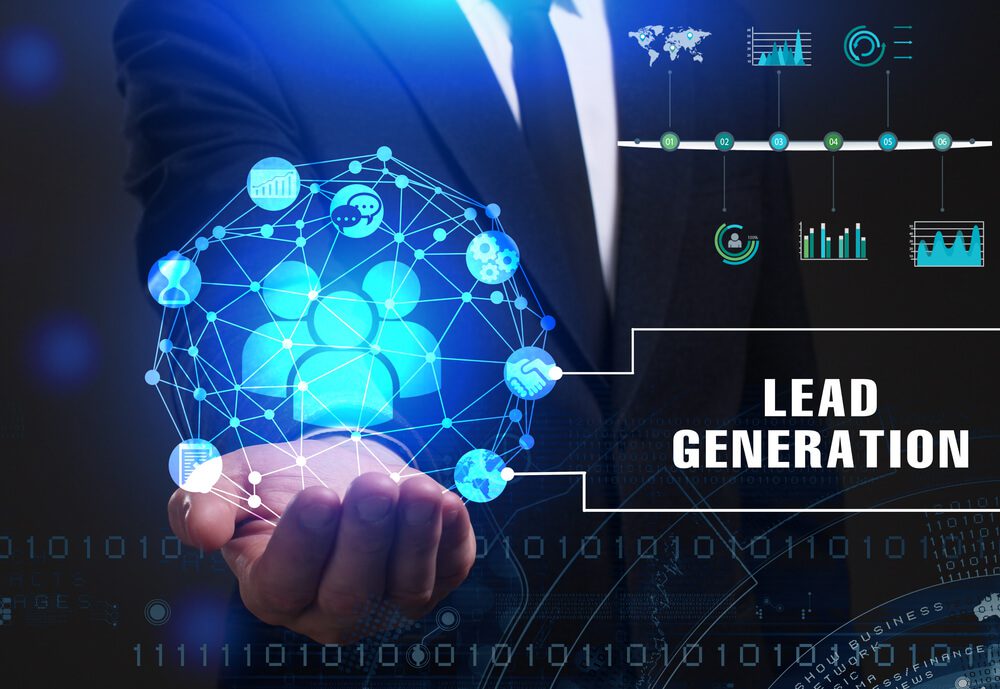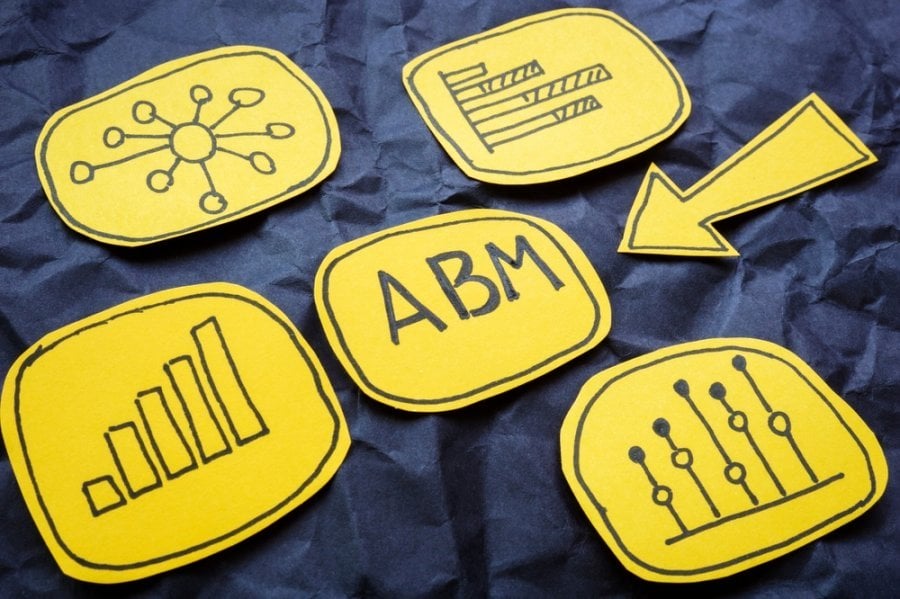
AI in Lead Generation?: Tips for Successful Leverage
Artificial intelligence (AI) is an effective lead-generation tool to improve business productivity, scalability, and efficiency. However, it works best if you know how to maximize its full potential.
This article shares the top tips on how to use AI so that it gives the most benefit to your business:
 Creating buyer and user personas helps businesses understand their target audience more deeply. They can tailor online marketing tactics, products and services, and the customer experience to their preferred leads.
However, the process can be tricky, and the profiles could be ineffective. This usually happens when you rely on assumptions, stereotypes, and biases in algorithms. You, also, are likely to make such a mistake when you use outdated or misleading information.
The area with the biggest challenges when building a persona is in the business-to-business (B2B) market. Often, you deal with two people: the customer and the end user. For instance, the C-suite executive (the customer) decides to buy customer relationship management (CRM) software for their team (the user).
They might belong to the same organization or department. However, they have specific needs, challenges, pain points, and preferences.
You can harness the power of AI to develop more accurate, relevant personas, particularly if you are in B2B. The right tools can:
Creating buyer and user personas helps businesses understand their target audience more deeply. They can tailor online marketing tactics, products and services, and the customer experience to their preferred leads.
However, the process can be tricky, and the profiles could be ineffective. This usually happens when you rely on assumptions, stereotypes, and biases in algorithms. You, also, are likely to make such a mistake when you use outdated or misleading information.
The area with the biggest challenges when building a persona is in the business-to-business (B2B) market. Often, you deal with two people: the customer and the end user. For instance, the C-suite executive (the customer) decides to buy customer relationship management (CRM) software for their team (the user).
They might belong to the same organization or department. However, they have specific needs, challenges, pain points, and preferences.
You can harness the power of AI to develop more accurate, relevant personas, particularly if you are in B2B. The right tools can:
 Unlike demand generation, lead generation is sales-driven. The primary objective of this often short-term strategy is no longer to raise brand awareness but to convert prospects into customers.
However, because it is resource-intensive, sales teams should be able to identify the most qualified and valuable leads in order to effectively prioritize their efforts.
You can use AI, especially for qualifying and scoring leads.
Lead qualification involves evaluating and determining a prospect’s readiness and suitability to progress through the sales pipeline. It assesses whether a prospect meets specific criteria and exhibits buying intent or potential. These factors include:
Unlike demand generation, lead generation is sales-driven. The primary objective of this often short-term strategy is no longer to raise brand awareness but to convert prospects into customers.
However, because it is resource-intensive, sales teams should be able to identify the most qualified and valuable leads in order to effectively prioritize their efforts.
You can use AI, especially for qualifying and scoring leads.
Lead qualification involves evaluating and determining a prospect’s readiness and suitability to progress through the sales pipeline. It assesses whether a prospect meets specific criteria and exhibits buying intent or potential. These factors include:
- Take advantage of your existing assets.
- Build accurate, relevant buyer and user personas.
- Qualify and score leads wisely.
Are you looking for a full-service digital marketing agency? See the DAP difference below!
1. Take Advantage of Your Existing Assets
In business, data works like a powerful compass, offering a sense of direction and clearing the mind for sound decision-making. This is especially true for lead generation. Data answers some of the biggest questions such as:- How many leads did the digital marketing campaigns attract?
- What is the cost per lead?
- Why is the return low?
- What is the percentage of sales-ready leads this quarter compared to the previous one?
- Obtain information about your past and present performance and
- Determine future outcomes or provide estimates by spotting patterns in data behavior.
- Lead scoring,
- Customer behavior analysis,
- Estimation of conversion probability and customer lifetime value (CLV),
- Churn prediction,
- Personalized recommendations, and
- Optimization of marketing campaigns, such as search engine optimization (SEO).
2. Build Accurate, Relevant Buyer and User Personas
 Creating buyer and user personas helps businesses understand their target audience more deeply. They can tailor online marketing tactics, products and services, and the customer experience to their preferred leads.
However, the process can be tricky, and the profiles could be ineffective. This usually happens when you rely on assumptions, stereotypes, and biases in algorithms. You, also, are likely to make such a mistake when you use outdated or misleading information.
The area with the biggest challenges when building a persona is in the business-to-business (B2B) market. Often, you deal with two people: the customer and the end user. For instance, the C-suite executive (the customer) decides to buy customer relationship management (CRM) software for their team (the user).
They might belong to the same organization or department. However, they have specific needs, challenges, pain points, and preferences.
You can harness the power of AI to develop more accurate, relevant personas, particularly if you are in B2B. The right tools can:
Creating buyer and user personas helps businesses understand their target audience more deeply. They can tailor online marketing tactics, products and services, and the customer experience to their preferred leads.
However, the process can be tricky, and the profiles could be ineffective. This usually happens when you rely on assumptions, stereotypes, and biases in algorithms. You, also, are likely to make such a mistake when you use outdated or misleading information.
The area with the biggest challenges when building a persona is in the business-to-business (B2B) market. Often, you deal with two people: the customer and the end user. For instance, the C-suite executive (the customer) decides to buy customer relationship management (CRM) software for their team (the user).
They might belong to the same organization or department. However, they have specific needs, challenges, pain points, and preferences.
You can harness the power of AI to develop more accurate, relevant personas, particularly if you are in B2B. The right tools can:
- Gather data from various sources. These include CRM systems, social media, and web analytics. It can also manage qualitative information, such as company sizes, job titles and roles, and contact information. Surveys and chatbots can be great sources of data about barriers and pain points.
- Cleanse the information to ensure accuracy, consistency, and quality. For instance, AI can remove duplicates, standardize formats, and warn you of missing values.
- Break down the data into segments. This step helps you clearly define your persona’s key characteristics, goals, motivations, and other pertinent details.
- Refine the profile regularly. Customers and users change, and your personas should reflect these shifts. The best AI tool easily integrates with other platforms, such as CRM, and may automatically adjust the personas based on new data.
3. Qualify and Score Leads Wisely
 Unlike demand generation, lead generation is sales-driven. The primary objective of this often short-term strategy is no longer to raise brand awareness but to convert prospects into customers.
However, because it is resource-intensive, sales teams should be able to identify the most qualified and valuable leads in order to effectively prioritize their efforts.
You can use AI, especially for qualifying and scoring leads.
Lead qualification involves evaluating and determining a prospect’s readiness and suitability to progress through the sales pipeline. It assesses whether a prospect meets specific criteria and exhibits buying intent or potential. These factors include:
Unlike demand generation, lead generation is sales-driven. The primary objective of this often short-term strategy is no longer to raise brand awareness but to convert prospects into customers.
However, because it is resource-intensive, sales teams should be able to identify the most qualified and valuable leads in order to effectively prioritize their efforts.
You can use AI, especially for qualifying and scoring leads.
Lead qualification involves evaluating and determining a prospect’s readiness and suitability to progress through the sales pipeline. It assesses whether a prospect meets specific criteria and exhibits buying intent or potential. These factors include:
- Demographics
- Budget or the lead’s financial capacity to purchase the product or service
- Authority or the prospect’s ability to decide for the organization
- Need
- Timing or how soon the lead needs the product or service
- Scoring model: a system the team relies on when assigning point values to different attributes, behaviors, or demographics
- Lead-scoring threshold: identifies the minimum score that defines when a lead is considered qualified and ready for sales engagement.
- Develop sophisticated lead-scoring models by learning from historical data and outcomes
- Automatically assign scores to leads based on various attributes, behaviors, and data points
- Continuously refine and optimize these models based on new data, feedback, and real-time interactions
- Provide real-time lead scoring, allowing for immediate evaluation and prioritization of leads as they engage with marketing campaigns or interact with the company’s digital platforms
- Enable sales teams to respond promptly and engage with high-scoring leads while they are actively interested
- Analyze unstructured data, such as emails, chat transcripts, and social media posts
- Perform sentiment analysis to understand customer intent
- Filter out leads that do not align with the target customer profile
- Monitor and analyze lead behaviors across various channels to assess their engagement levels, interests, and purchase intent
- Continuously learn and adapt based on new data and outcomes, improving the system’s accuracy and relevance
Summing Up
To be clear, AI is not the holy grail businesses seek to eliminate human intervention. Instead, it is a tool to simplify many complex lead-generation processes. This way, it is easier to develop, manage, and track and faster to scale and refine. Partner with a team that understands the technology’s intricacies and potential to get the most out of AI. Digital Authority Partners (DAP), a lead-generation agency, can assist you. Our team has the knowledge, expertise, and platforms to streamline the process. Contact us to learn more about how we design and implement AI-driven solutions tailored to your needs.Want To Meet Our Expert Team?
Book a meeting directly here



